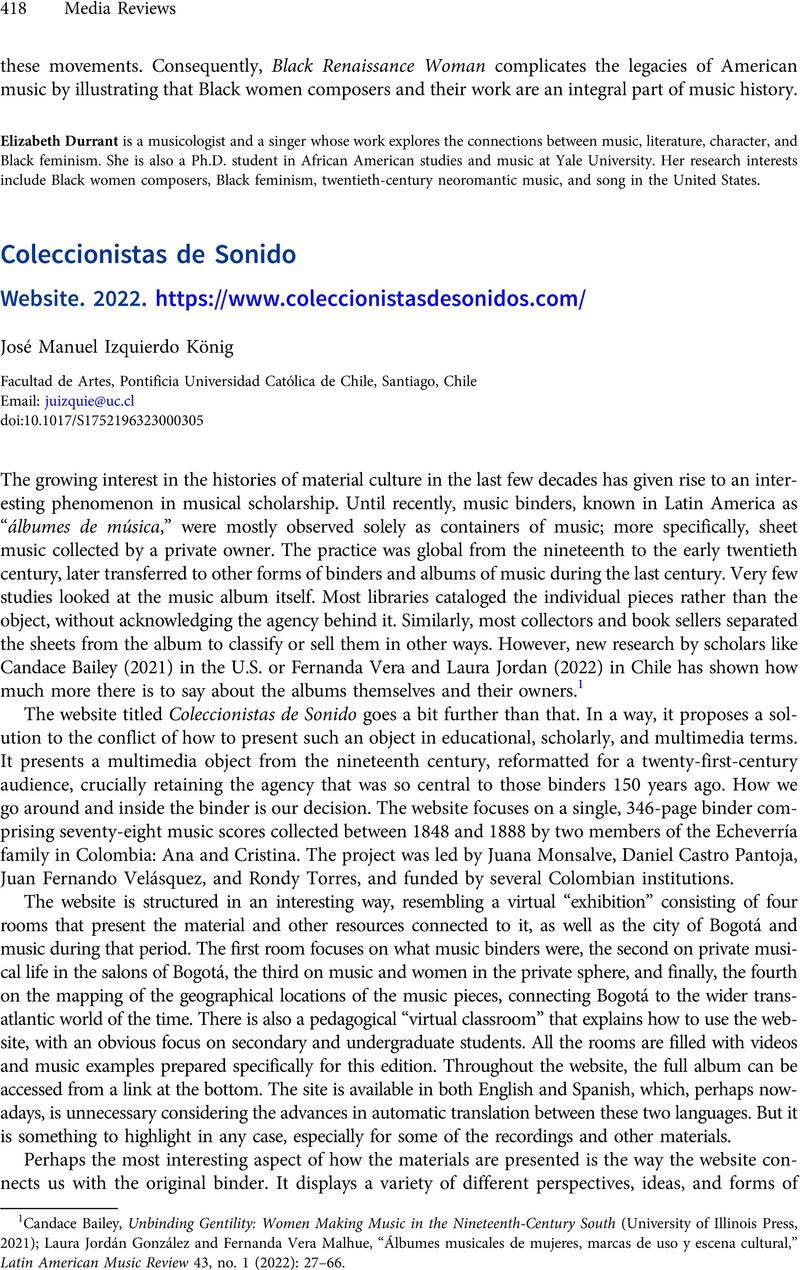No CrossRef data available.
Published online by Cambridge University Press: 16 November 2023

1 Bailey, Candace, Unbinding Gentility: Women Making Music in the Nineteenth-Century South (University of Illinois Press, 2021)Google Scholar; González, Laura Jordán and Malhue, Fernanda Vera, “Álbumes musicales de mujeres, marcas de uso y escena cultural,” Latin American Music Review 43, no. 1 (2022): 27–66CrossRefGoogle Scholar.